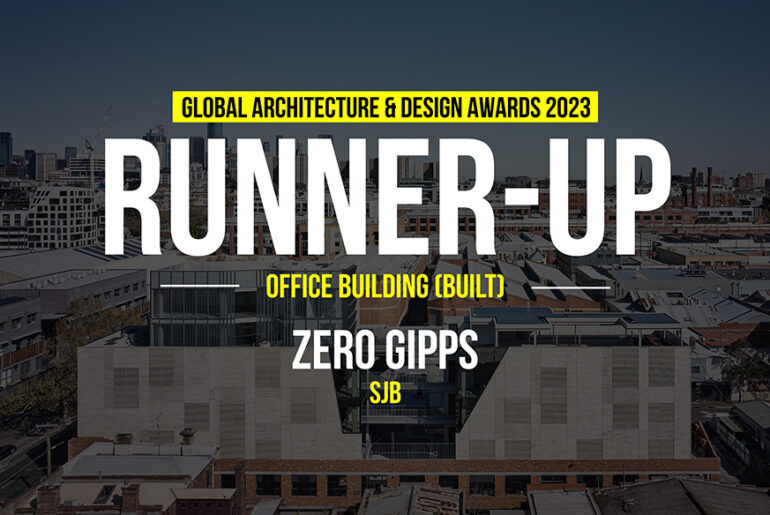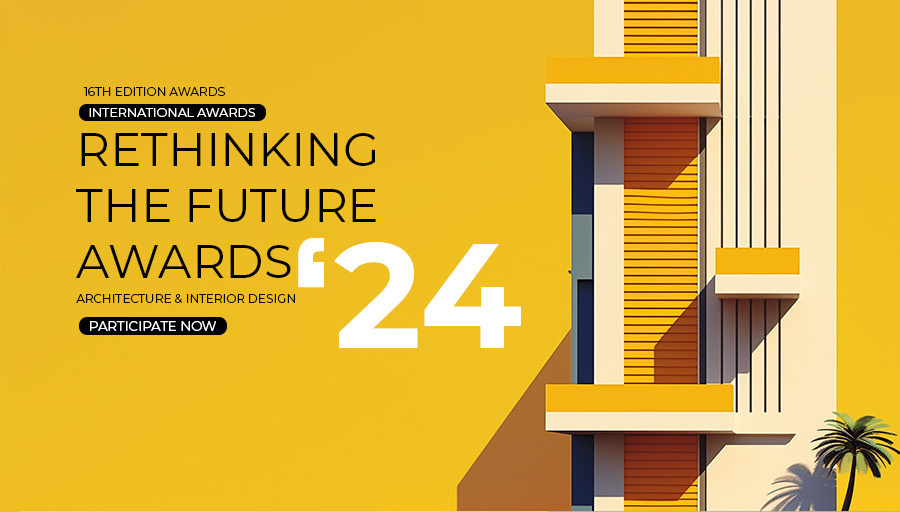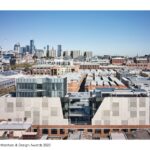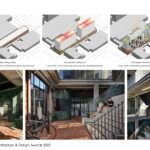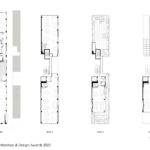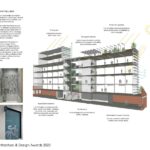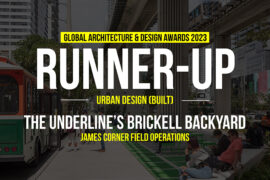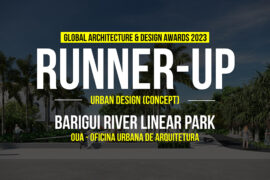The long and linear site presented an opportunity to open the building from the middle via the laneway rather than a prominent street address – a simple design move that resolved circulation issues, enhanced solar accThe long and linear site presented an opportunity to open the building from the middle via the laneway rather than a prominent street addresess and natural ventilation, and improved building connectivity. A small cafe and communal garden courtyard greet users on arrival as well as an outdoor staircase promoting active movement throughout the building.
Global Design & Architecture Design Awards 2023
Third Award | Office Building (Built)
Project Name: Zero Gipps
Category: Office building (Built)
Studio Name: SJB
Design Team: Beaudene Fulwood, Dom Bunnag, Fiona Coakley, Stephen Liddy, Tristan Wong
Area: 618sqm
Year: 2022
Location: Collingwood, Melbourne, Australia
Consultants: Contractor: Coben, Project Manager: Fontic, Landscape: Eckersley Garden Architecture, Sustainability Consultant: Stantec, Structural Engineer: Webber, Services Engineer: Wrap Engineering, Fire Engineer: WSP
Photography Credits: Aaron Puks, Derek Swalwell
Other Credits: Client: Dare Property Group
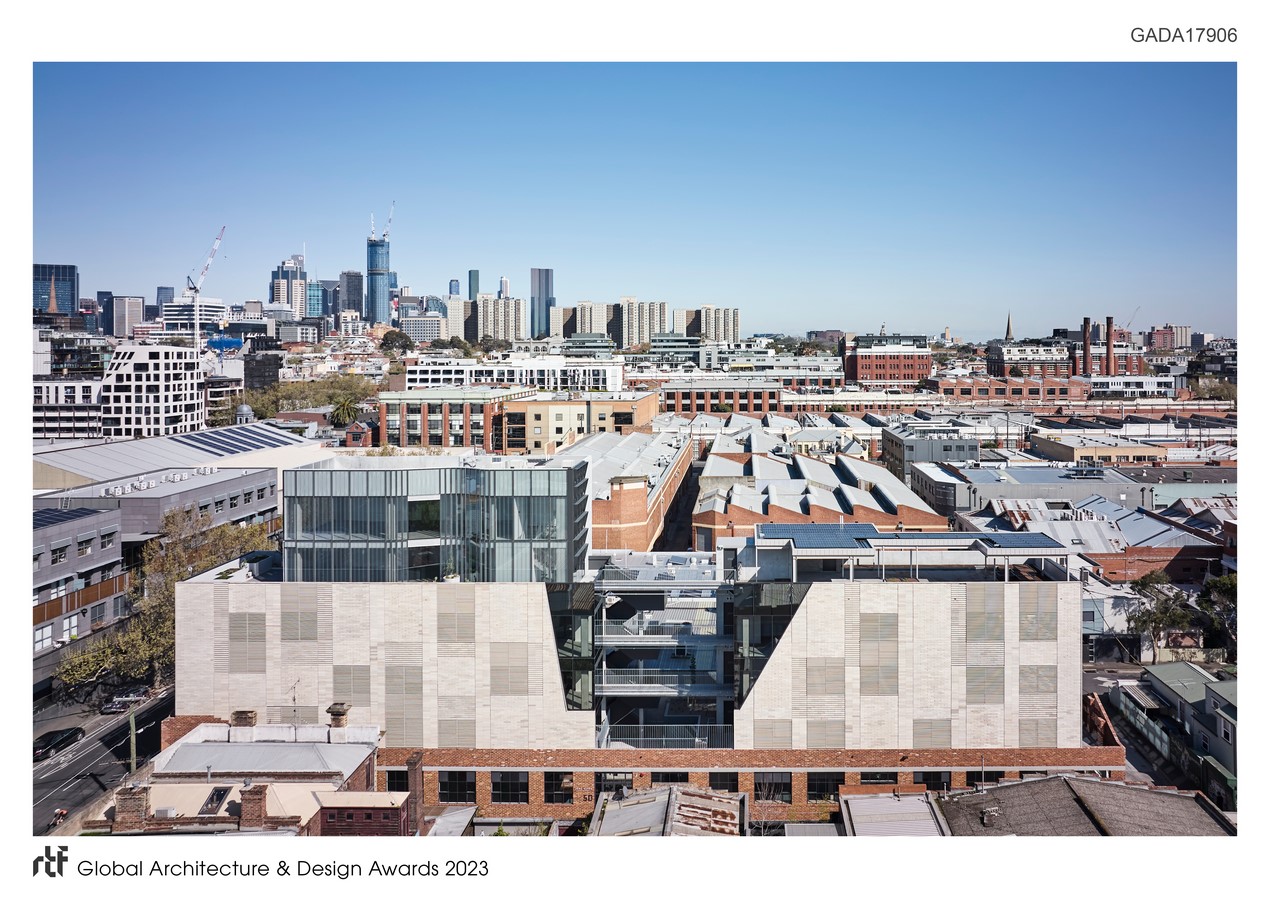
The long and linear site presented an opportunity to open the building from the middle via the laneway rather than a prominent street address – a simple design move that resolved circulation issues, enhanced solar access and natural ventilation, and improved building connectivity. A small cafe and communal garden courtyard greet users on arrival as well as an outdoor staircase promoting active movement throughout the building.
An existing early 20th-century warehouse facade was retained, and its original elements repurposed. The red brick of the factory has been conserved, along with the steel hopper windows on the ground floor, while some of the building’s boundary walls of original brickwork have been reinstated at the entrance in a herringbone pattern.
The new and old facades are harmonious with the use of locally sourced bricks on the long edges of the building. While some bricks sit in a flat stack bond format across the façade with a slight shadow gap between them, others are laid in a staggered bond and tilted in a shiplap-like format, creating a kind of ‘sawtooth’ grain in the brickwork.
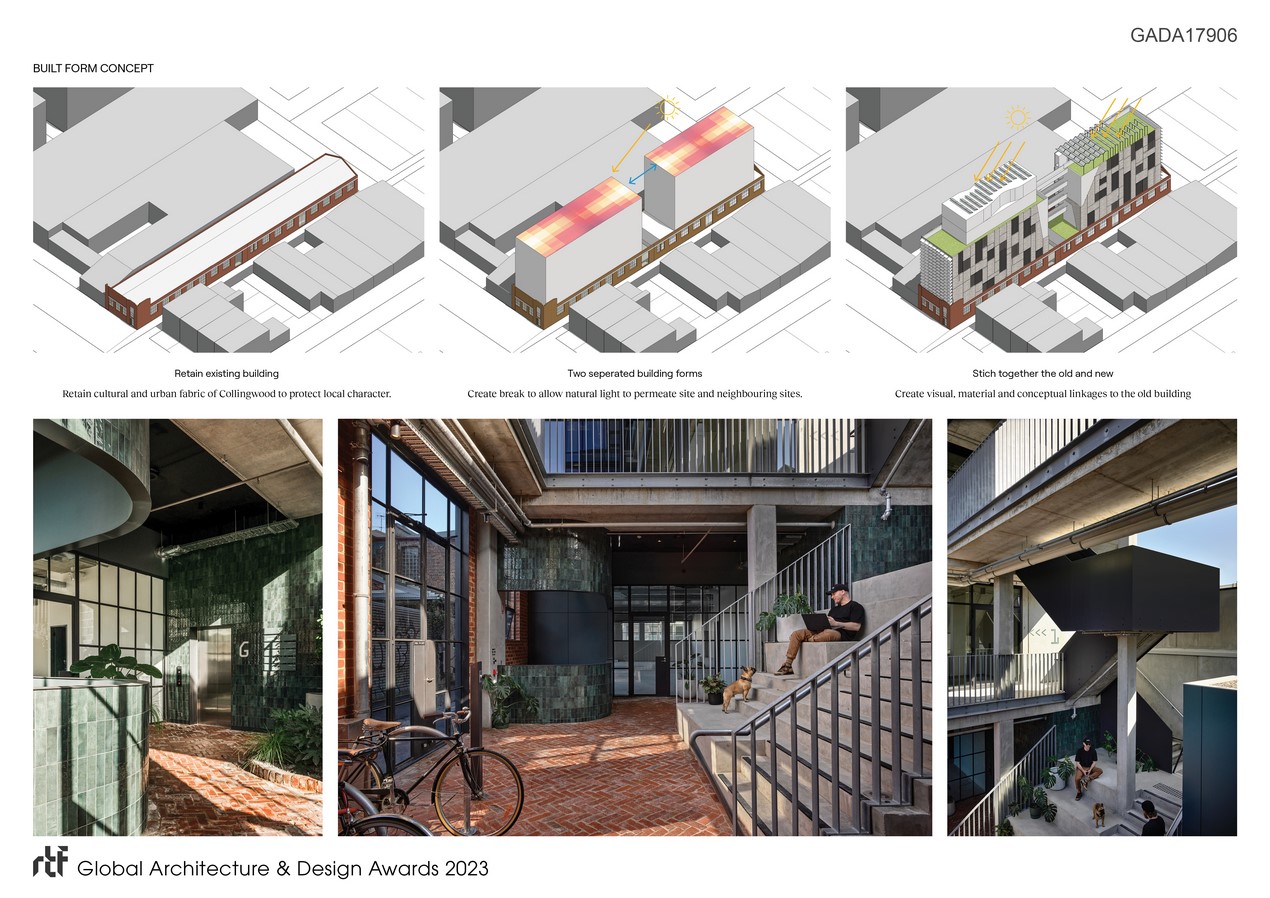
To create clarity over the original warehouse and the new masonry insert, a sculptural and sinuous glass form sits atop the building. It adds two floors of workspace, is set back to provide landscaping areas on level 4 and is a deliberately recessive counterpoint to the brick’s strong and monolithic aesthetic.
The angled steel shrouds of the old hopper windows of the original warehouse are reinterpreted in the new building as external hoods, providing solar control to the north and a degree of privacy to the south. This also animates the façade, with the hoods fanning in depth across their width, and further references the building’s industrial character.
Linking bridges with open stairways connect the two building forms on every level, encouraging chance connections as people move up and down stairways and across the walkways. Fresh air and spectacular views over Collingwood are added benefits.
True to its name, Zero Gipps reflects sustainability aspirations – ‘Zero’ refers to its zero operational emissions and zero gas. Several active and passive sustainable design initiatives contribute to its 78% Built Environment Sustainability Scorecard score.

Exposed concrete ceilings add to the industrial character and also reduce environmental impact by minimising material use. The central courtyard and edible garden create connections to nature and 100 solar panels on the roof deliver 35kw of energy. Inward opening tilt and turn windows behind ceramic battens enable natural ventilation, unlike a standard office building that’s fully sealed and only mechanically ventilated.
A considered Green Travel Plan is matched with generous end-of-trip facilities including luxurious change rooms, showers, dryers, personal lockers, electric charging stations and bike parking for 56 bikes – well exceeding the minimum requirements. These inclusions combined led to one of the building’s most significant attributes: permission by the Council for no cars on site.

